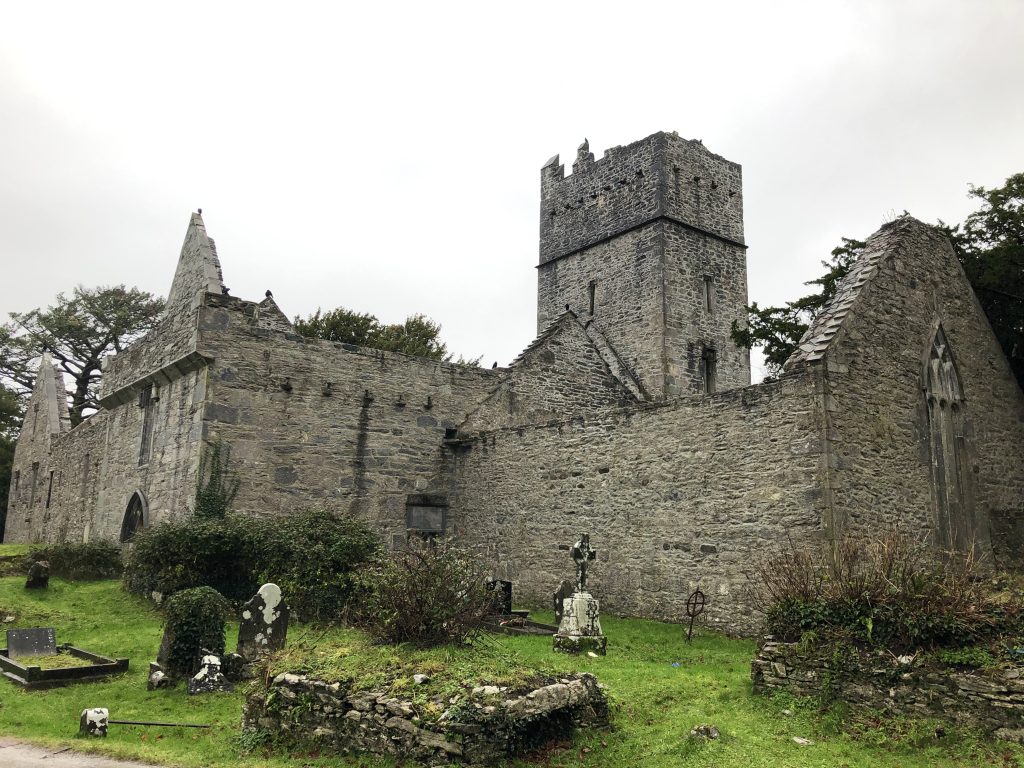
I spent my last County Kerry day wandering the wet woods of Killarney.
With so few people plodding the post-Christmas streets of the town, it was difficult to imagine just how packed Ireland’s first — and most popular — national park could be in the high season.
The mountains were dressed in purple heather misted by passing rain. The interlinked Lakes of Killarney, each with its own unique ecosystem, are surrounded by forests of oak and yew. A damp woodland smell hovers about the place, its perfume an irresistible lure to walkers and hikers
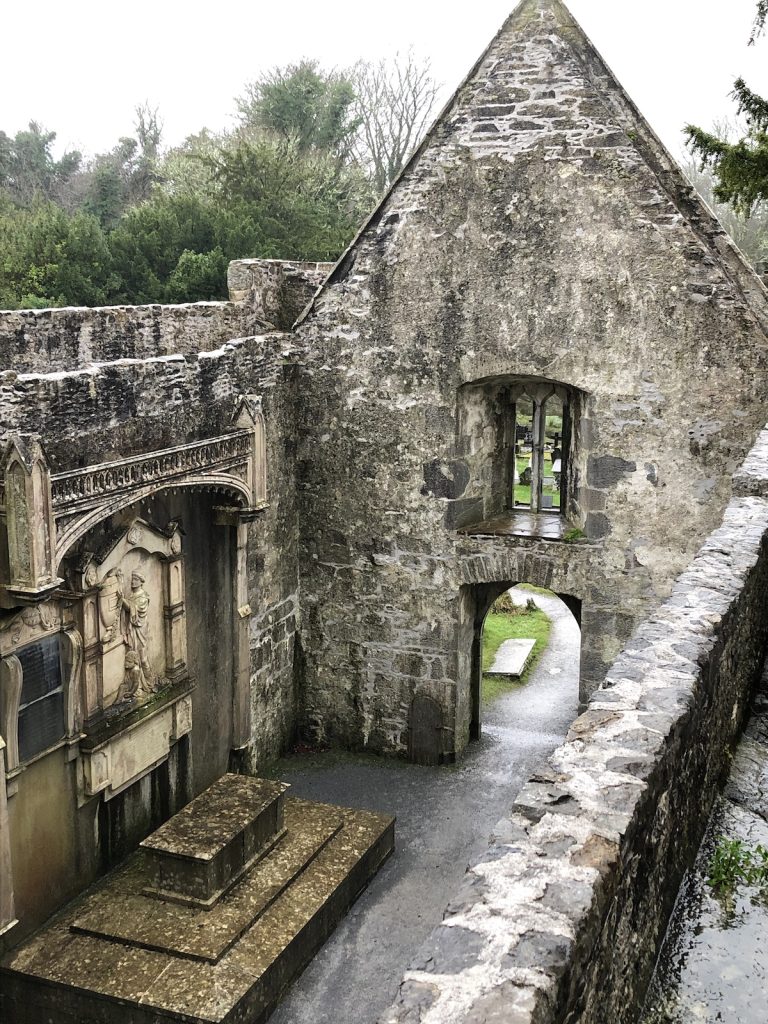
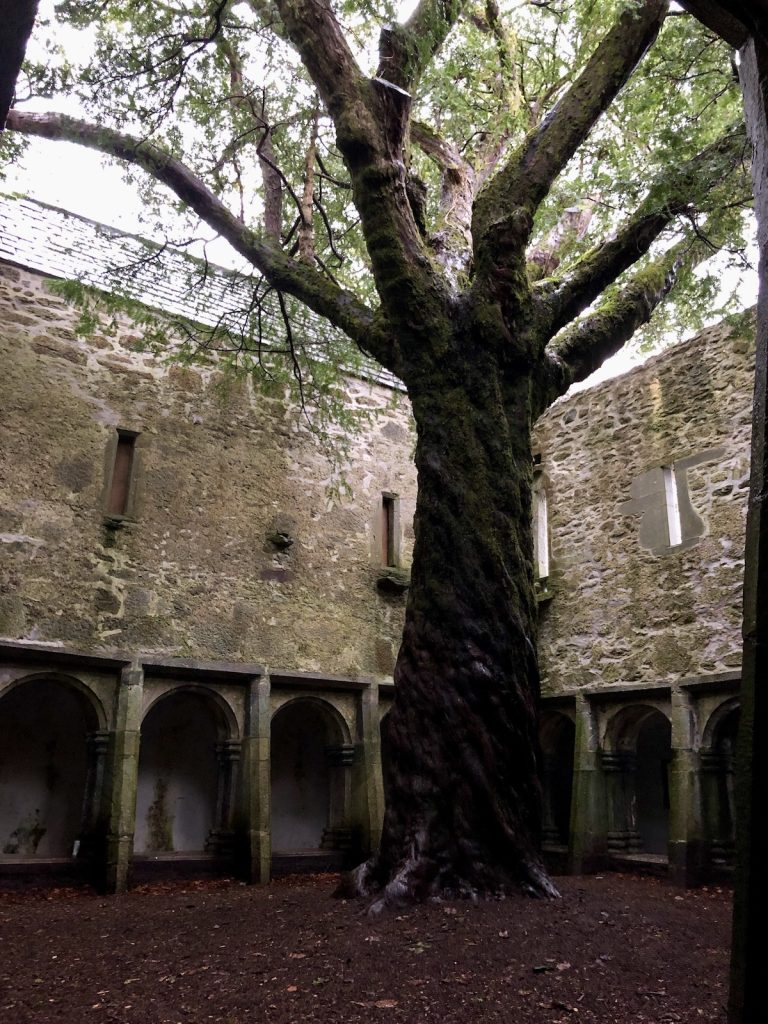
We wandered the ruins of Muckross Abbey, where I was surprised to find intact, though roofless, upper floors. At its heart, a haunting cloister surrounded a single yew tree, said to be as old as the abbey itself. Founded as a Franciscan friary in 1448, its monks were persecuted by invading English forces under Oliver Cromwell, which finally drove them out in the 1650s.
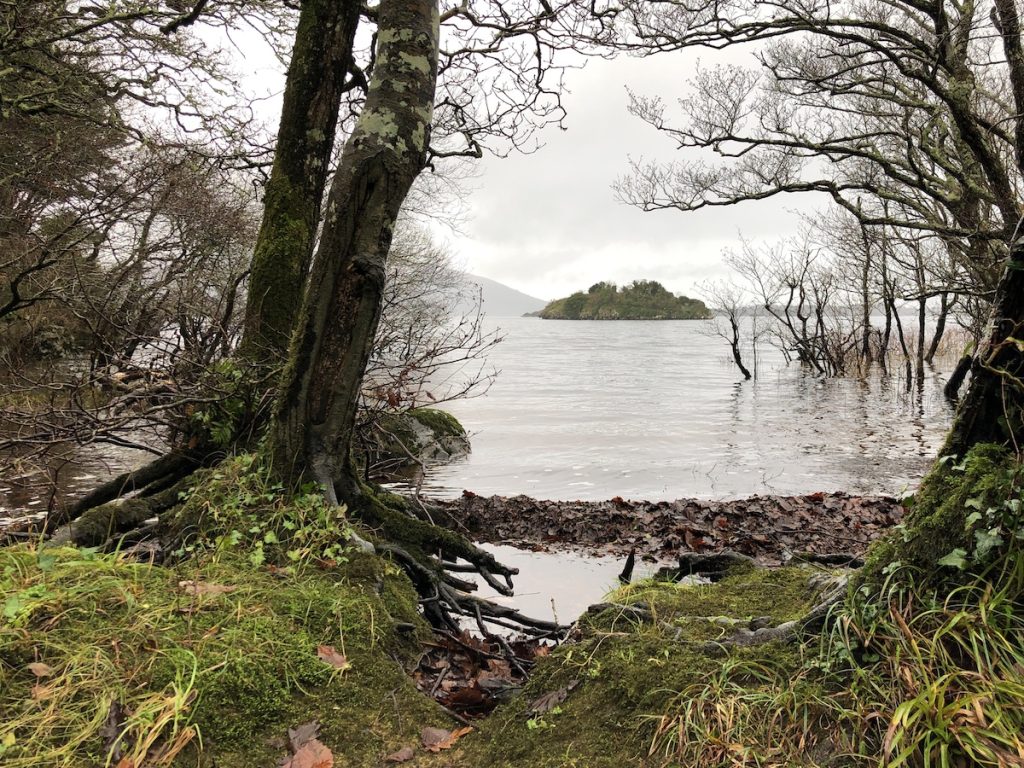
We followed a lakeside path through the forest that promised to be a hiking trail but was really just a secluded detour which wound along the shore of Lough Leane.
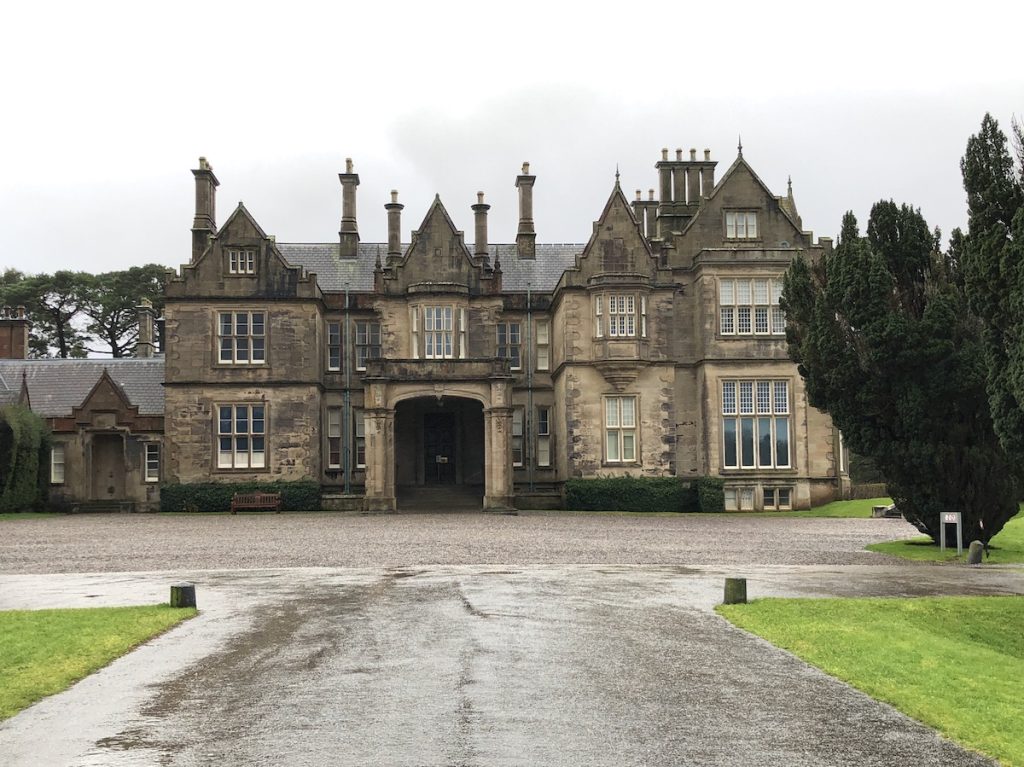
I wanted to wander the sixty-five rooms of Muckross House, a 19th century Tudor-style manor and farm that sits on a peninsula between Muckross Lake and Lough Leane, but a sign taped to the door said it was closed between Christmas and New Year. The website had said otherwise, but the world of cyberspace felt so far away.
We walked back down the forested path to the car and drove over to Ross Castle — also closed — for a look at the 15th century keep built by a chieftain called O’Donoghue Mór. The grey stone walls and tower stood vigil over a Lough Leane teeming with seagulls, and a bank of hungry swans that were fattened by tourists on whole loaves of bread.
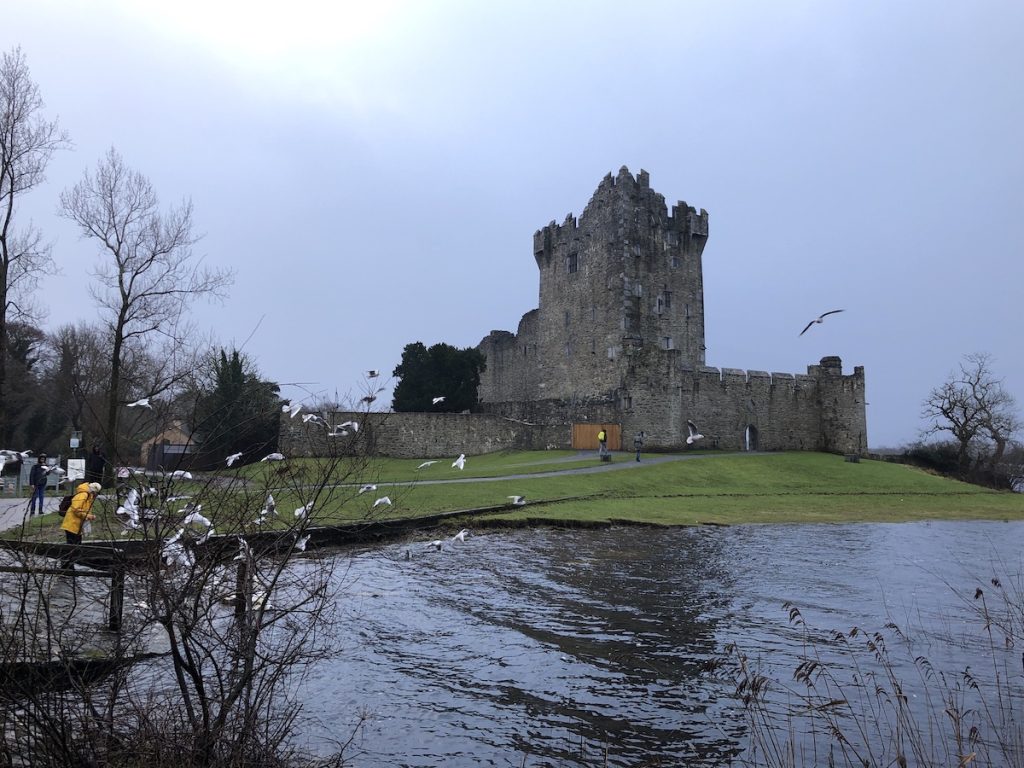
A sudden pelting rain came down, driven by violent winds. We were sent scuttling back to the car, and to a cafe in Killarney town where a strong cup of Bewley’s tea and a scone restored our sodden spirits.
As is often the case in Ireland, rain was a strictly local phenomenon. The skies had cleared in the distance, and so I pointed the car down the Fossa Road for a walk through the Gap of Dunloe, the region’s most scenic mountain pass, a narrow channel scraped out by glacier. Five lakes flow through it, connected by the River Loe, which separates the Purple Mountain Group from the craggy peaks of MacGillycuddy’s Reeks.
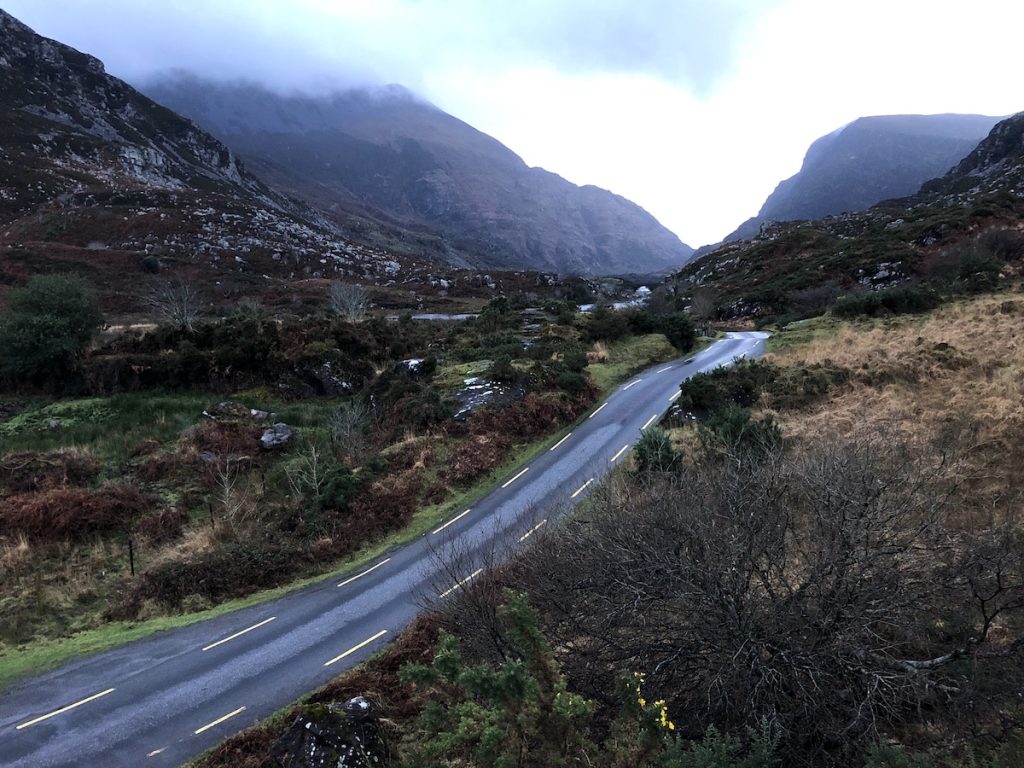
It was late in the day when we set out, and the afternoon light — so short in winter — had already begun to fade. The few people we encountered were walking down. Only we were walking up.
We’d been fending for ourselves in the small kitchen of our rented flat on the 24th and 25th, and even two days later, many restaurants in Killarney remained closed. But we lucked out in Killorglin, just down the hill from our abode.
I was surprised by just how many good restaurants, pubs and shops could be found in this attractive town of 2,200, especially compared to the long-faded fortunes of my own 4,500 person hometown.
Tender slices of lamb shank and mash were the perfect finish to a very damp day, and the pints were so good I had to have two.
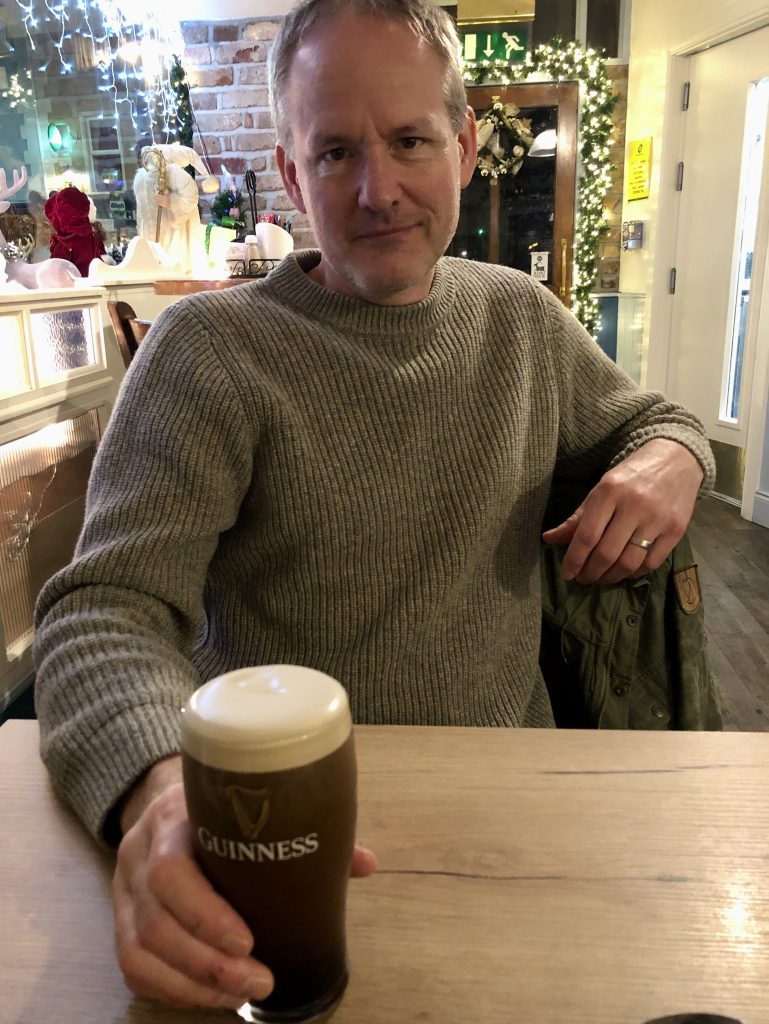
Photos ©Tomoko Goto 2022
